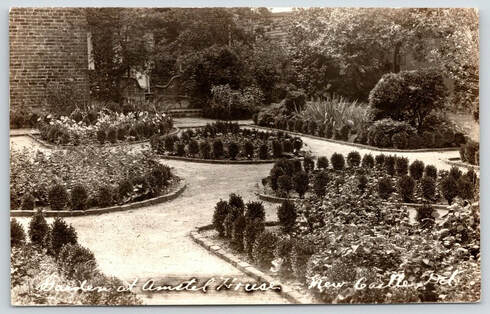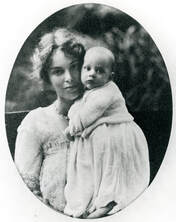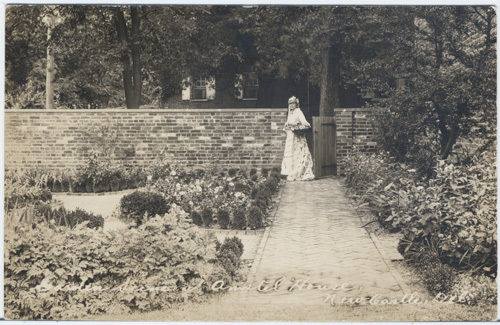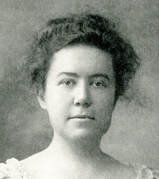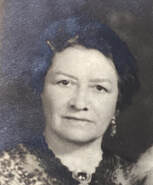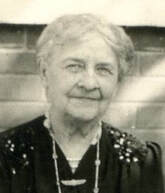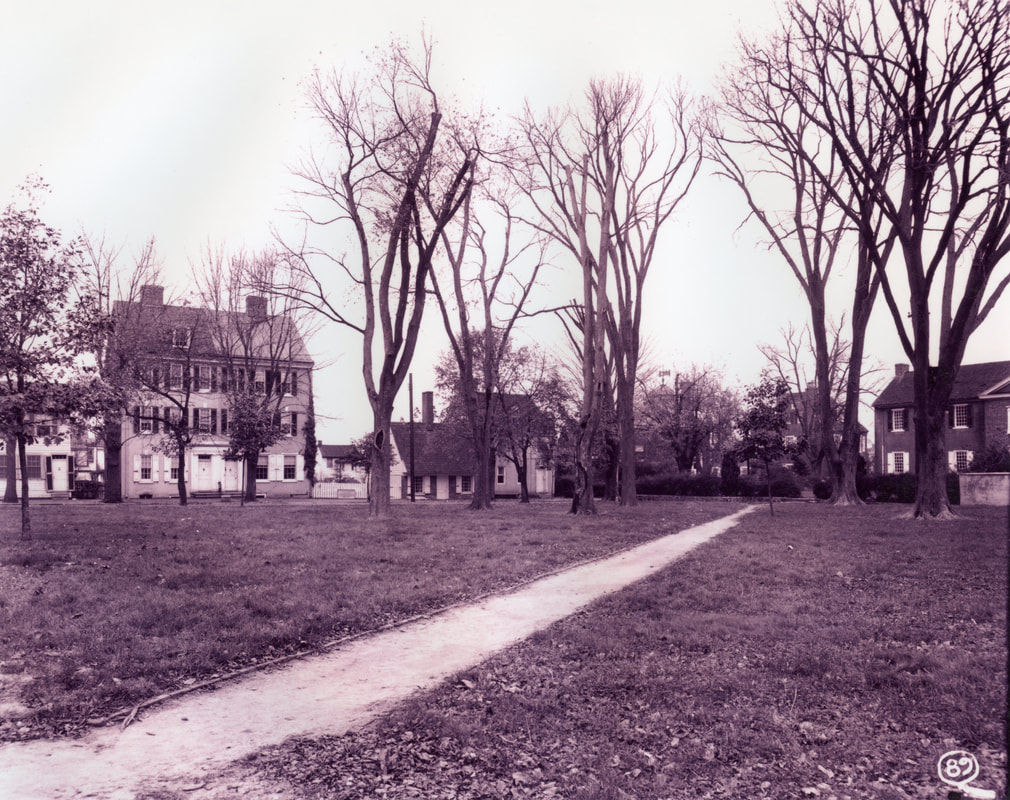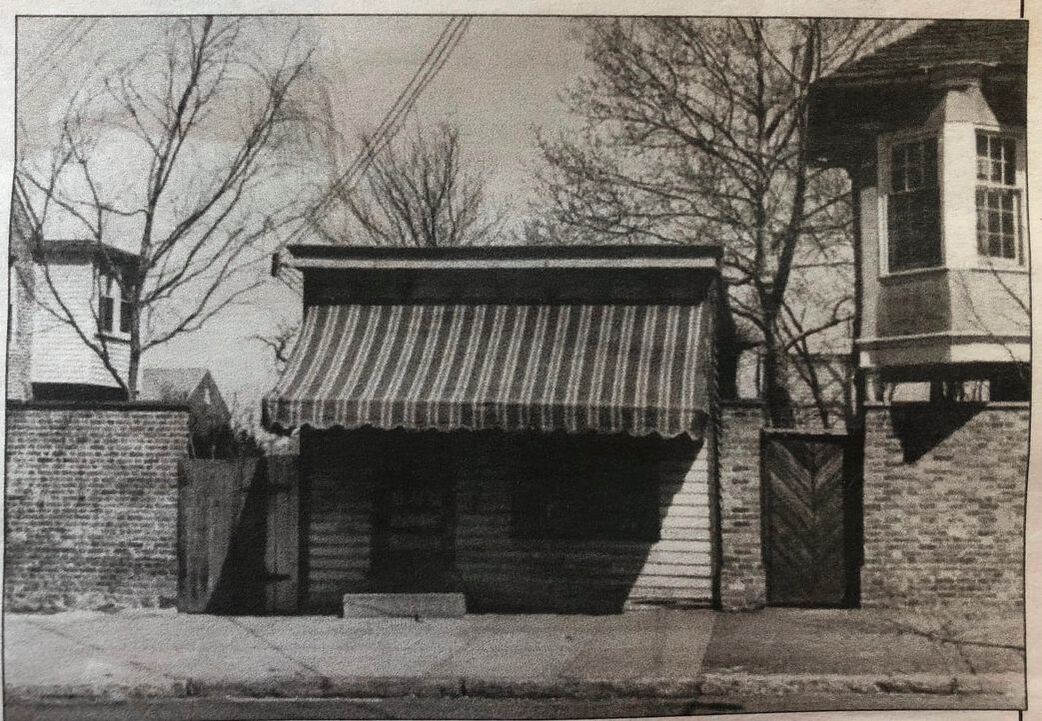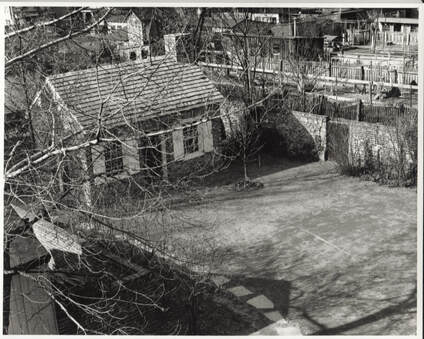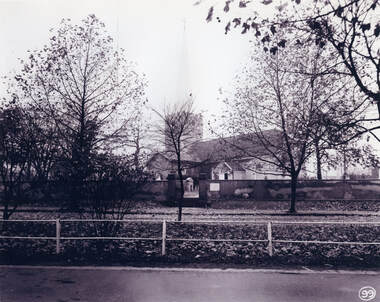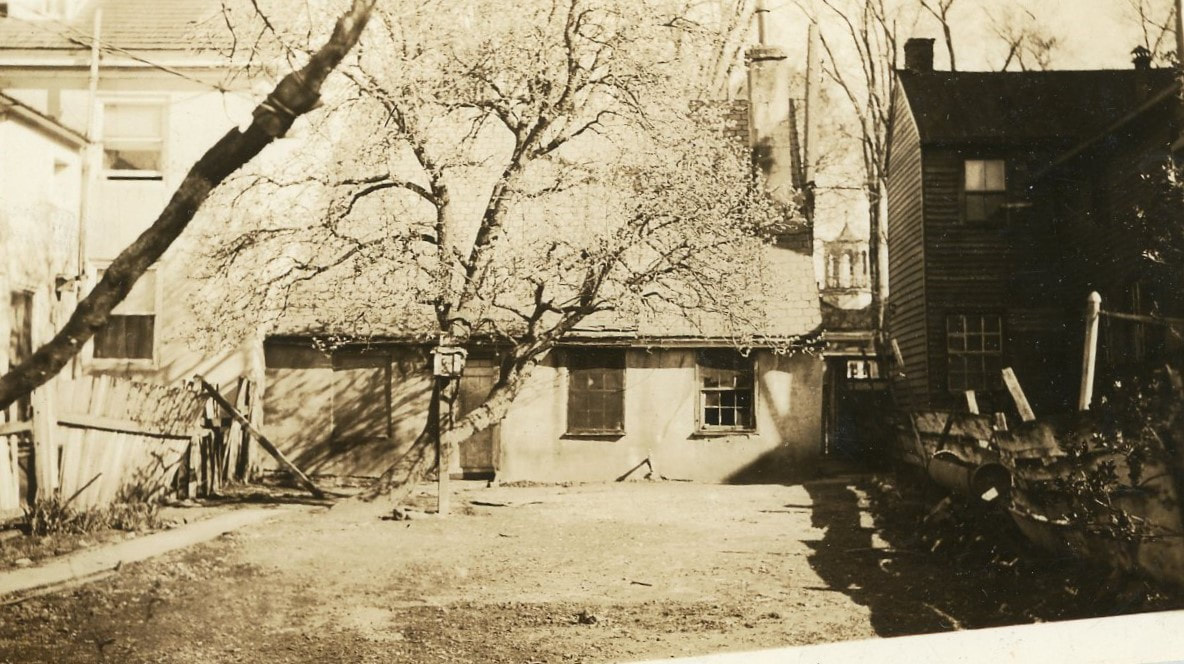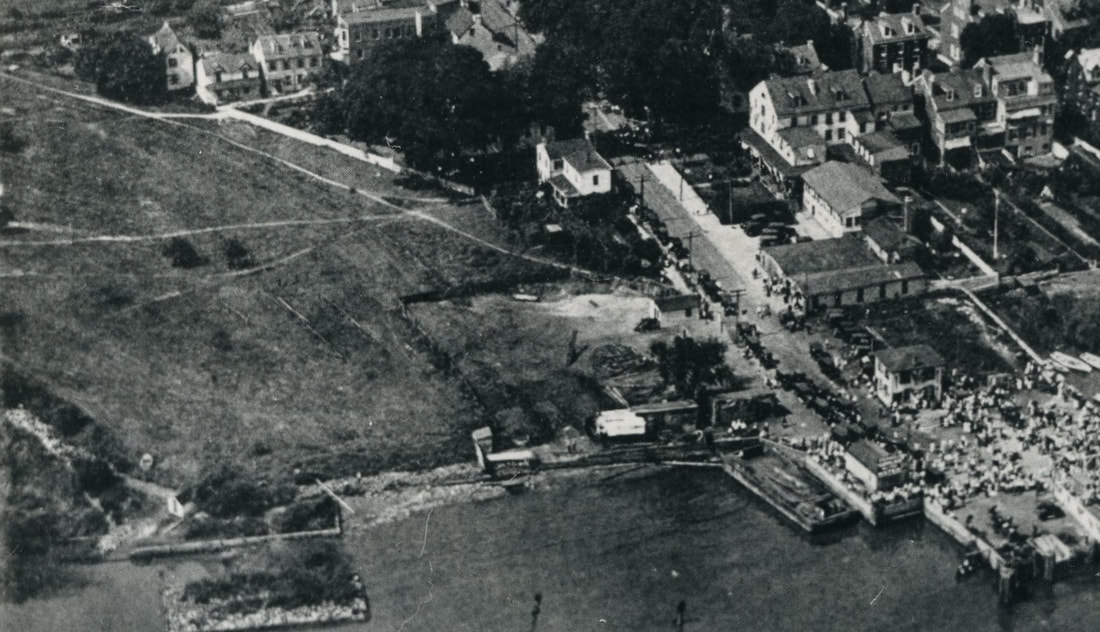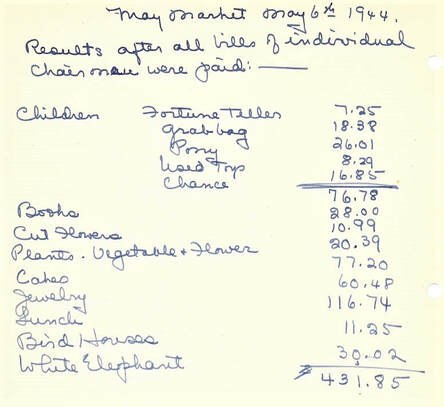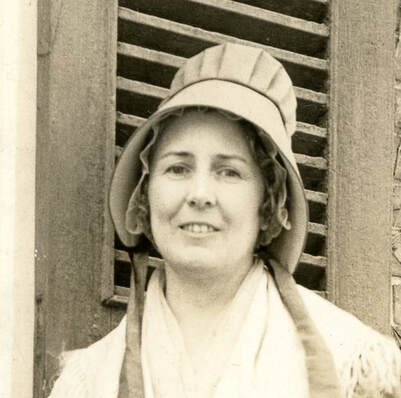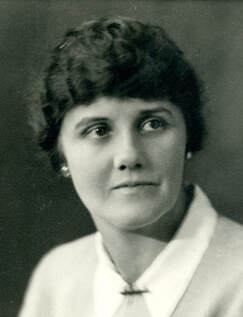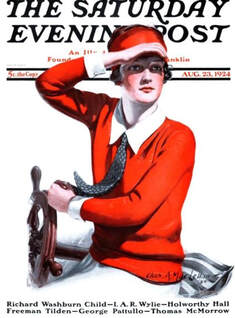History of Arasapha and the Amstel and Dutch House Gardens
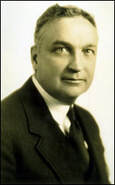 Charles Gillette
Charles Gillette
1931: The Amstel House Committee, formed in 1929 to acquire and care for the Amstel House as a museum, presented an idea to Brandywine Garden Club. On February 5, during an afternoon of bridge at Amstel House sponsored by the committee, Helene Layton, President of Brandywine Garden Club, was asked if her club might consider cleaning up and replanting the Amstel House garden. Brandywine Garden Club agreed to undertake the Amstel House garden as its main project. Under the leadership of Helene Layton, the club hired Charles Gillette, a Virginia landscape architect, who drew up elaborate Colonial Revival plans for the garden.
1932: Work on the Amstel House garden began. The first project was building a wall around the garden. The wall did not completely surround the garden. Part of the Amstel House grounds along Delaware Street were still occupied by two small buildings housing a cobbler and the Board of Water & Light Commissioners. The Delaware Street wall could not be completed until those buildings were vacated and demolished. A temporary brick wall was built around the buildings in the interim.
Work on the garden itself began in June. Unpaved walkways were laid out, and trees, shrubs, perennials, and bulbs were planted, including several hundred small boxwoods. Gillette supervised much of the work. Click here to learn more about the Amstel House garden design.
Work on the garden itself began in June. Unpaved walkways were laid out, and trees, shrubs, perennials, and bulbs were planted, including several hundred small boxwoods. Gillette supervised much of the work. Click here to learn more about the Amstel House garden design.
1934: Arasapha Garden Club was founded. Mary Shaw, Anne Janvier, and Harriett Cavenaugh, all members of the Amstel House Committee, are credited with suggesting the club. In January 1934 Mary Shaw and Anne Janvier organized a meeting to form the "Amstel Garden Club." Mary Shaw, often credited as the founder of the club, chaired the first meeting on January 25 at the Amstel House, with 27 women in attendance.
We don't know why the name Arasapha was chosen. Newspaper accounts from 1934 stated (incorrectly) that Arasapha was an old Indian name for New Castle. (Click here to learn how the name came to be incorrectly associated with Delaware.) We don't know why the first members found Arasapha a more appealing name than the more obvious New Castle Garden Club.
We do know why the name Amstel Garden Club was proposed and why it was rejected. Some wanted Arasapha to focus on caring for the Amstel House garden. But a different purpose emerged at Arasapha's first meeting: beautifying and improving historic New Castle. It would be ten years before Arasapha assumed responsibility for the Amstel House garden.
We don't know why the name Arasapha was chosen. Newspaper accounts from 1934 stated (incorrectly) that Arasapha was an old Indian name for New Castle. (Click here to learn how the name came to be incorrectly associated with Delaware.) We don't know why the first members found Arasapha a more appealing name than the more obvious New Castle Garden Club.
We do know why the name Amstel Garden Club was proposed and why it was rejected. Some wanted Arasapha to focus on caring for the Amstel House garden. But a different purpose emerged at Arasapha's first meeting: beautifying and improving historic New Castle. It would be ten years before Arasapha assumed responsibility for the Amstel House garden.
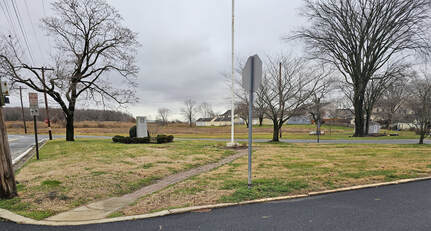 Veterans Triangle today, with Arasapha's plantings long gone
Veterans Triangle today, with Arasapha's plantings long gone
1934-1957: Arasapha beautified and maintained Veterans Triangle. Arasapha's first project was beautifying what's known today as Veterans Triangle, the small park at the intersection of Chestnut, East 3rd, and East 4th Streets. Arasapha planted shrubs and flowers in the park and continued to maintain it until 1957.
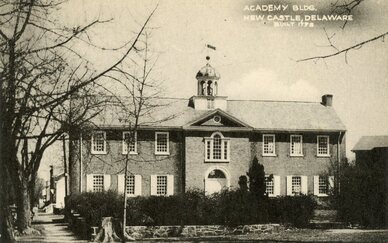 A 1930s photo of the Academy and its new retaining wall (New Castle Historical Society).
A 1930s photo of the Academy and its new retaining wall (New Castle Historical Society).
1934-1937: Arasapha beautified vacant lots and public property throughout New Castle and inspired and encouraged others to do the same. Members of Immanuel Church, for example, beautified the grounds in front of the Academy on the Green in 1934, including installing the retaining wall that is still there today.
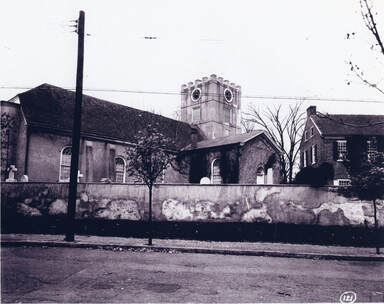 This 1940 photo by Albert Kruse shows not only Immanuel Church but also including two trees on Harmony Street that were likely planted by Arasapha in 1938. They were either silver maples or oriental plane trees (New Castle Historical Society).
This 1940 photo by Albert Kruse shows not only Immanuel Church but also including two trees on Harmony Street that were likely planted by Arasapha in 1938. They were either silver maples or oriental plane trees (New Castle Historical Society).
1934-1941: Arasapha planted over 400 trees along City streets and in parks and other public property. Most of the trees were sugar maples, Norway maples, oriental plane trees, and weeping willows. The club also planted red oaks, Chinese elms, hemlocks, arborvitae and dogwood. The Trustees of New Castle Common funded most of Arasapha's tree planting program during this period. Unfortunately, most of the trees that Arasapha planted were varieties too large for New Castle's narrow streets and sidewalks and overhead utility wires, so within a few decades most were removed, and very few remain today.
|
1934-1939 and 1955: Arasapha beautified the Green. In the early 1930s children used the Green as a ball field and playground, so the lawn and plantings were in poor condition. In 1934, architect Laussat Richter Rogers designed a landscape plan for the Green. Arasapha selected and oversaw the planting of dozens of trees and shrubs donated by a local nursery. The Trustees of Market Square, who managed the Green, paid to remove tree stumps and plant trees.
In Fall 1954, Hurricane Hazel severely damaged several elms on the Green. The Trustees of Market Square didn't have the resources to remove stumps and replace trees on their own, so Arasapha again stepped in. The club paid for a professional landscape plan. Stumps were removed, remaining trees trimmed, bare lawn areas graded and seeded, and about a dozen trees planted. |
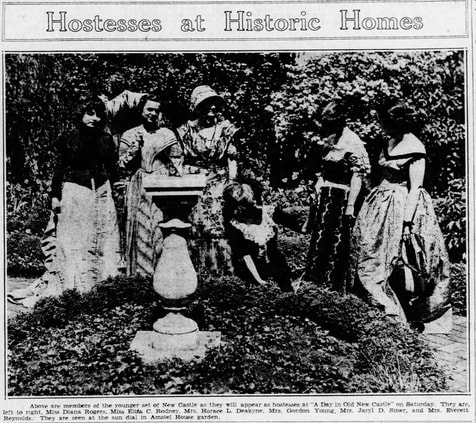 The sundial and pedestal in the ivy-filled parterre garden in 1938 (Wilmington Morning News)
The sundial and pedestal in the ivy-filled parterre garden in 1938 (Wilmington Morning News)
1935: New Castle Historical Society, now owner of the Amstel House, purchased and tore down the cobbler's shop intruding into the garden. With the cobbler's shop demolished, Wilmington Garden Club was able to construct part of the brick wall along Delaware Street, install garden gates designed by Gillette, and add shrubs and brick walks to the newly acquired lot. In 1936 the club installed a sundial and pedestal in the parterre garden and replaced the parterre's flowers with ivy. The biggest project during this period was construction of the garden house in the rear of the garden in 1937, largely from salvaged materials.
The building housing the Board of Water & Light Commissioners was the only remaining obstacle to truly completing the garden. The temporary brick wall was rebuilt to hide it.
The building housing the Board of Water & Light Commissioners was the only remaining obstacle to truly completing the garden. The temporary brick wall was rebuilt to hide it.
|
1935-1940: Arasapha beautified the strip of land between Market and 2nd Streets. A 1935-1936 Federal Work Projects Administration project added gravel walks and did some landscaping. Arasapha removed weeds and planted flowers, dogwood and redbud trees, tulip bulbs, and ivy.
|
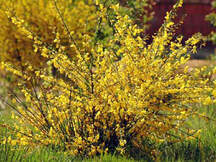 200 Scotch broom like this one were once planted along Chestnut Street.
200 Scotch broom like this one were once planted along Chestnut Street.
1936-1942: Arasapha beautified the new Ferry Cutoff extension of Chestnut Street between East 4th and East 6th Streets. Arasapha members were told that this area was named the Bowery by city founder Peter Stuyvesant because he saw so many trees and shrubs growing here. The club arranged to have 200 Scotch broom shrubs transplanted here from the Chesapeake & Delaware Canal, where they were being removed as the canal was widened.
1936-1944: Arasapha worked for better control of New Castle's litter by lobbying successfully for and sometimes paying for trash cans on the Green and along Delaware Street.
1937-1938: Arasapha planted trees, shrubs, and flowers at local schools. In 1937 the club oversaw the planting of 90 tiny evergreen seedlings along the northern boundary of William Penn School (now New Castle Elementary School). In 1938 the club donated trees, shrubs, and flowers to William Penn School and also to Buttonwood and Booker T. Washington Schools, which served African American children in the years before desegregation.
 Florence Bayard Hilles speaking to a crowd circa 1916 (Library of Congress)
Florence Bayard Hilles speaking to a crowd circa 1916 (Library of Congress)
1937-1942 and 1948-1949: Florence Bayard Hilles hosted Arasapha picnics at Ommelanden, her estate on River Road south of New Castle, where she raised lotus lilies and other plants. A prominent and active suffragist in the early 20th century, she was once arrested for blocking traffic while picketing the White House. She served three days of her 60-day sentence before receiving a presidential pardon. In the 1930s she served six years as national chair of the National Woman's Party.
In 1947, Florence Bayard Hilles asked Arasapha to lobby for a state historical marker recognizing the River Road. The marker was erected in 1949 at the intersection of South and West 5th Streets. It is still there today.
In 1947, Florence Bayard Hilles asked Arasapha to lobby for a state historical marker recognizing the River Road. The marker was erected in 1949 at the intersection of South and West 5th Streets. It is still there today.
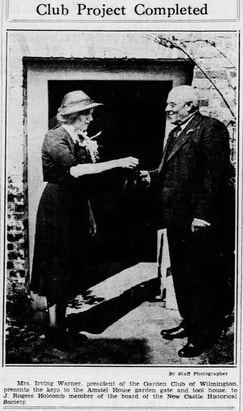 (Wilmington Morning News)
(Wilmington Morning News)
1938: Wilmington Garden Club's Amstel House garden project concluded. With no prospect of the Board of Water & Light Commissioners building being acquired and demolished in the foreseeable future, Wilmington Garden Club ended its project. The total cost was approximately $5000--or $100,000 in today's dollars. On May 2, at a ceremony at Amstel House, Wilmington Garden Club handed over the key to the garden house to New Castle Historical Society. Wilmington Garden Club also handed over bricks and $200 to complete the Delaware Street wall whenever the Board of Water & LIght Commissioners vacated its property. Arasapha was not represented at the ceremony. The Amstel House Committee assumed responsibility for the garden until 1944.
|
1938-1946: Arasapha supported the Dutch House museum. In 1935, Arasapha planned to acquire the Dutch House as a club house and began saving for its purchase. After the Delaware Society for the Preservation of Antiquities purchased the house, in 1938 Arasapha donated the $100 it had saved to the Society's Dutch House restoration project. In 1939 and again in 1946, Arasapha members served as "hostesses" for the museum.
|
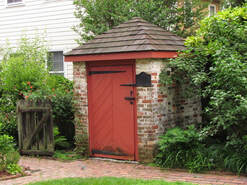 Tool house in the Dutch House garden
Tool house in the Dutch House garden
1938-1939: The Dutch House's new owner, the Delaware Society for the Preservation of Antiquities, landscaped its garden. In 1938, the Society hired Philadelphia landscape architect Robert Wheelwright of Wheelwright & Stevenson to design the Dutch House garden. The simple plan included a formal "parterre" or "knot" garden to the left of the Dutch House; a brick terrace behind the Dutch House; and paths, garden beds, pear trees, and a fence around the perimeter of a grass lawn. Click here to learn more about the Dutch House garden design.
In 1938-1939, 500 tulip bulbs donated by Queen Wilhelmina of the Netherlands were planted, along with at least 60 boxwoods and fruit trees. The Delaware Society of Colonial Dames of America paid for a small tool house. Arasapha's contribution to the initial Dutch House garden was an herb garden.
In 1938-1939, 500 tulip bulbs donated by Queen Wilhelmina of the Netherlands were planted, along with at least 60 boxwoods and fruit trees. The Delaware Society of Colonial Dames of America paid for a small tool house. Arasapha's contribution to the initial Dutch House garden was an herb garden.
|
1938-1947: Arasapha supported the development of Battery Park. In 1938 New Castle had no playgrounds. Arasapha, the Century Club (a New Castle women's club), and City Council collaborated to develop a playground on the Battery, including a baseball diamond and tennis courts. Arasapha contributed at least $275 to this project. The playground officially opened in May 1941.
Arasapha also worked to beautify and improve the rest of the park, planting about 50 trees. The club cleared weeds and trimmed trees to clear a walking path on the land south of today's New Castle Sailing Club--likely the path that still exists today. |
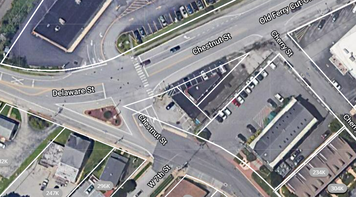 The triangular lot in this image from Zillow, now housing a restaurant, may have been the lot that Arasapha beautified.
The triangular lot in this image from Zillow, now housing a restaurant, may have been the lot that Arasapha beautified.
1939-1943: Arasapha beautified a triangular lot between the Armory and Ferry Cutoff. In 1939 the City filled in the previously unsightly lot with top soil provided by the state highway department. Arasapha then added plantings to the lot.
1940: Arasapha beautified the former city dump. The City moved its dump from a corner of East 6th Street and Ferry Cutoff to a new location in a marsh near Buttonwood. Arasapha arranged to have the City excavate and grade the abandoned 6th Street site. Top soil was added, and Arasapha planted trees, grass, flowers and shrubs.
1942-1944: World War II impacted Arasapha's activities. Its members, busy with the war effort, had less time and fewer resources for civic improvement projects. The club supported the New Castle Hundred Victory Garden Committee by operating a Victory Garden information center in the Amstel House.
1944: Arasapha assumed responsibility for the Amstel and Dutch House gardens from the Amstel House Committee.
1942-1944: World War II impacted Arasapha's activities. Its members, busy with the war effort, had less time and fewer resources for civic improvement projects. The club supported the New Castle Hundred Victory Garden Committee by operating a Victory Garden information center in the Amstel House.
1944: Arasapha assumed responsibility for the Amstel and Dutch House gardens from the Amstel House Committee.
1944: Arasapha held its first May Market fundraiser. In 1942 the Visiting Nurses Association held a "Flower Market and Book Sale" on the New Castle Court House plaza. In 1943 the event became an annual event renamed May Market, and in 1944 Arasapha took over the event from the Visiting Nurses Association.
The first five May Markets (1942-1946) were chaired by Isabel Booth. In 1943, she chaired not only May Market but also Arasapha and the Visiting Nurses Association! May Market continues to this day as Arasapha's signature annual fundraiser. Click here to learn more about the history of this beloved community event.
The first five May Markets (1942-1946) were chaired by Isabel Booth. In 1943, she chaired not only May Market but also Arasapha and the Visiting Nurses Association! May Market continues to this day as Arasapha's signature annual fundraiser. Click here to learn more about the history of this beloved community event.
Another Arasapha member instrumental in bringing May Market to Arasapha was Edna Deakyne, president of Arasapha in 1944. Edna Deakyne had operated the Court House Tea Room in New Castle Court House from 1926 to 1942. In her youth, Edna was the subject of several Saturday Evening Post covers.
1944-1948: Arasapha supported the Amstel House museum as well as its garden. The club donated thousands of dollars towards a new furnace, redecorating the main bedroom, a new kitchen floor, and other improvements to the museum.
1946: Arasapha proposed creating a Tree Commission to care for streetscape trees and other trees on public property. From 1935 to 1946, Arasapha oversaw the maintenance of streetscape trees. Seeing a need for interagency cooperation in maintaining the trees, Arasapha proposed a joint Tree Commission to the City, the Trustees of New Castle Common, and the Board of Water & Light Commissioners (now the Municipal Services Commission). The Tree Commission was established in 1947 and began meeting in 1948. While its responsibilities, funding, level of activity, and membership have fluctuated considerably over the decades, it is an active body today.
1949: Arasapha and New Castle Lions Club installed street signs in the historic district. Before 1949 there were few street signs in New Castle. Arasapha members researched street signs including those in Colonial Williamsburg. With the advice of local architect Albert Kruse, Arasapha decided on signs on wooden boards mounted on unpainted wood posts. The Lions Club installed 16 signposts.
1949-1950: Wilmington Garden Club spearheaded a rehabilitation of the Amstel House garden. The condition of the Amstel House garden in 1948 reflected the club's lack of focus on it. In December 1948 Arasapha member Margaret Janvier Holcomb (Anne Janvier's daughter) wrote in a newspaper editorial, "Members of the Wilmington Garden Club have been to New Castle recently and were unpleasantly surprised at the condition of the Amstel House garden for which they have donated so freely their time and money."
Wilmington Garden Club brought in landscape architect Southard Jones to advise and work on the garden. Wilmington Garden Club agreed to supply new plants if Arasapha paid for labor. Trees were pruned or replaced; boxwoods were treated; and roses, flower bulbs, and many perennials wer planted. The lawn was seeded and fertilized, and strawberries were planted as a ground cover. By 1950 Arasapha deemed the garden "in good condition," although the garden was still marred by the Board of Water & Light Commissioners building protruding into the grounds.
1950: Arasapha adopted its first bylaws. They stated that the club had a two-fold purpose: (1) the beautification and improvement of New Castle, with special emphasis on the Amstel House Garden, and (2) the stimulation of interest and knowledge in practical gardening among members. With the addition of the Dutch House Garden as a second special emphasis, these remain Arasapha's purposes today.
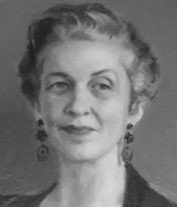 Victorine duPont Homsey (history.delaware.gov)
Victorine duPont Homsey (history.delaware.gov)
1952-1957: Arasapha oversaw a major rehabilitation of the Dutch House garden. The club asked Wilmington architect Victorine duPont Homsey to design a rehabilitation of the garden of the Dutch House, which had been acquired by New Castle Historical Society. The Homsey design was very similar to the 1939 Wheelwright design, adding a fence and rose garden between the middle section of the garden and a rear orchard.
1955-1975: Arasapha transferred responsibility for maintenance of the Amstel and Dutch House gardens to New Castle Historical Society. With the garden rehabilitations largely complete, by 1955 Arasapha wanted to turn its attention to the Green, recently devastated by Hurricane Hazel. The club supported the gardens through annual donations to New Castle Historical Society. In 1975 Arasapha resumed responsibility for ongoing maintenance.
1958: Arasapha was a charter member of the Delaware Federation of Garden Clubs. The relationship was short-lived; Arasapha resigned from the Federation in 1968 so it could devote the money spent on dues to its local projects.
1955-1975: Arasapha transferred responsibility for maintenance of the Amstel and Dutch House gardens to New Castle Historical Society. With the garden rehabilitations largely complete, by 1955 Arasapha wanted to turn its attention to the Green, recently devastated by Hurricane Hazel. The club supported the gardens through annual donations to New Castle Historical Society. In 1975 Arasapha resumed responsibility for ongoing maintenance.
1958: Arasapha was a charter member of the Delaware Federation of Garden Clubs. The relationship was short-lived; Arasapha resigned from the Federation in 1968 so it could devote the money spent on dues to its local projects.
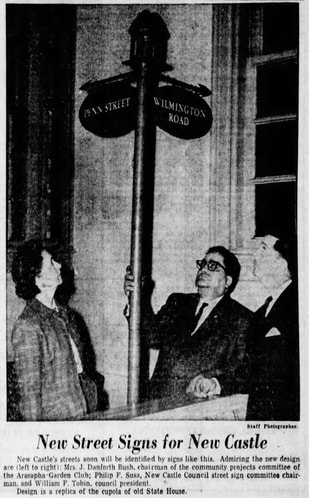 (Wilmington News Journal)
(Wilmington News Journal)
1959-1960: Arasapha led the design of the street signs that are in New Castle's historic district today. With the 1949 wooden street signs already falling apart, Arasapha asked John Sweeny, assistant curator at Winterthur, to design new street signs. He suggested wooden ovals, and Arasapha member Annette Bush suggested topping the poles with replicas of the Court House cupola. The New Castle Hundred Lions Club helped install the new signs. The street signs were updated in 1983, with metal oval signs replacing the wooden ones.
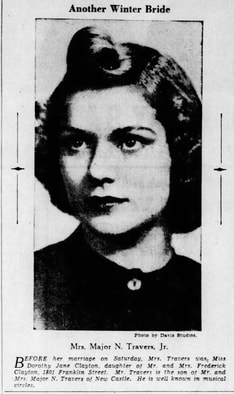 Dorothy Travers in 1942 (Wilmington News Journal)
Dorothy Travers in 1942 (Wilmington News Journal)
1962: Arasapha helped initiate and supported summer concerts in Battery Park. The mayor named Arasapha president Dorothy Travers as chair of a committee to initiate summer concerts in Battery Park. Dorothy Travers was the "main instigator of the plan." Arasapha contributed $100 to the first concert series in 1962 and continued to contribute annually for a number of years thereafter. The Battery Park summer concert series remains an important part of life in New Castle today.
|
1962-1978: Arasapha improved and maintained landscaping at the Delaware Street wharf. In the late 1950s Arasapha became interested in beautifying the wharf area, which was still a working wharf used by fishermen and crabbers--very different from today's wharf. In 1961 the club had a landscape architect draw up plans that were approved by City Council. We don't know exactly where Arasapha installed plantings.
|
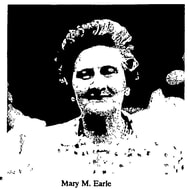 Mary Earle (New Castle Gazette)
Mary Earle (New Castle Gazette)
1963: Arasapha began its annual Holiday Greening Christmas decoration project. Responding to a proposal by Arasapha member Mary Earle, Arasapha began a project to decorate the Historic District's businesses and public buildings with all-natural materials and to light cupolas and steeples. Within a few years the Trustees of New Castle Common and City Council provided grants to support the project, a partnership that continues today. Arasapha now decorates over 100 wreaths annually.
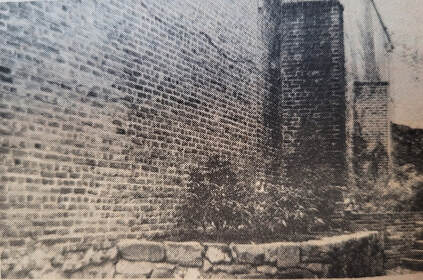 Court House garden in 1979 (New Castle Gazette)
Court House garden in 1979 (New Castle Gazette)
1971-1976: Arasapha designed and planted a garden between the Court House and the Sheriff's House. The State of Delaware, which managed both buildings, asked Arasapha to undertake this project. Arasapha paid for a professional landscaping plan in 1971, but work stalled for several years as the state repaired the walls surrounding the garden and considered an archaelogical excavation. In 1976 the state announced that it did not have funds to complete the entire garden. Arasapha eventually planted part of the garden with rhododendron, mountain laurel, and holly. There's no evidence that the rest of the garden was ever completed. Today the uncompleted space is filled by a ramp entering the Court House.
1973: The Board of Water & Light Commissioners building protruding into the Amstel House garden was finally demolished. In 1973, 35 years after the rest of the garden was installed, the Delaware Street wall was finally completed and landscaping of the building site begun.
1980s: The former pear orchard in the rear of the Dutch House garden site was transformed into a perennial garden.
1988: Arasapha began offering an extensive selection of herbs at May Market, a tradition that continues today.
1988: Arasapha began offering an extensive selection of herbs at May Market, a tradition that continues today.
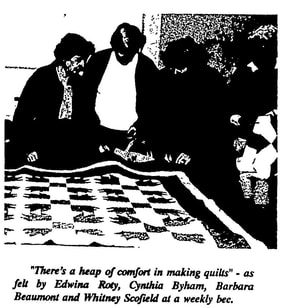 Quilt for 1996 raffle (New Castle Weekly)
Quilt for 1996 raffle (New Castle Weekly)
1993: Arasapha launched a raffle of a home-stitched quilt to boost funds raised at May Market. The quilt raffle was a feature of May Market for almost 30 years, through 2021.
2004: Arasapha Garden Club, Inc., was incorporated in the State of Delaware as a non-profit corporation.
2005: The IRS determined that Arasapha Garden Club is a public charity (a 509(a)(2) organization) under Section 501(c)(3) of the Internal Revenue Code, effective October 19, 2004.
2004: Arasapha Garden Club, Inc., was incorporated in the State of Delaware as a non-profit corporation.
2005: The IRS determined that Arasapha Garden Club is a public charity (a 509(a)(2) organization) under Section 501(c)(3) of the Internal Revenue Code, effective October 19, 2004.
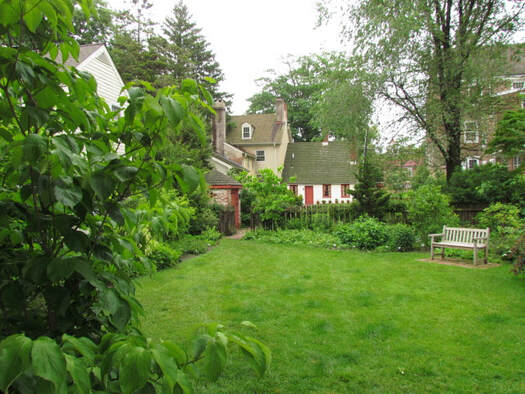 The Native Plant Garden in 2014
The Native Plant Garden in 2014
2011: The space in the rear of the Dutch House garden that was once a pear orchard and then a perennial garden was transformed into a native plant garden.
2018: A major rehabilitation of the Amstel House Garden returned the garden closer to Charles Gillette's historic Colonial Revival design.
2020: May Market was cancelled for the first time since its inception in 1942 because of the COVID-19 pandemic.
2021: Arasapha turned over maintenance of the Amstel and Dutch House gardens to New Castle Historical Society and continues to support the gardens financially.
2018: A major rehabilitation of the Amstel House Garden returned the garden closer to Charles Gillette's historic Colonial Revival design.
2020: May Market was cancelled for the first time since its inception in 1942 because of the COVID-19 pandemic.
2021: Arasapha turned over maintenance of the Amstel and Dutch House gardens to New Castle Historical Society and continues to support the gardens financially.

